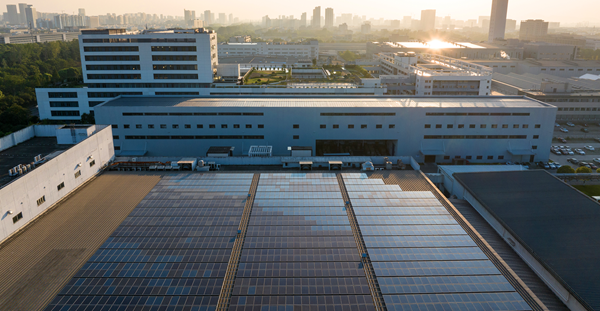When it comes to combatting climate change, we find ourselves at a crossroad. Are we truly ready to abandon the hope of avoiding catastrophic impacts by curtailing global warming to 1.5 degrees? And regardless of how we answer that question, are we doing enough to prepare for the impacts we are already facing?
As a global community we are facing an enormous challenge, and there is a dangerous likelihood that at this rate, we won't achieve the Paris Climate Agreement. But we also know that if we admit defeat now, we'll be in a much worse position in 2030 (and 2050). Every fraction of a degree counts, so we should be doing everything we can to try to reach this goal, despite the long odds. As organizations like Project Drawdown and others remind us, this goal is – from a technical perspective – very possible and within reach. If we do as the IPCC Assessment Report recommends, we can make 2025 the last year that global GHG emissions increase, and we will be back on the path to 1.5.
So, what needs to happen to give us a chance to not exceed 1.5 degrees of global warming and what role does the engineering sector need to play in making this possible?
Here at Arcadis, we have a clear message on this front, best articulated by our global CEO Peter Oosterveer, who has written about what true climate action entails and why climate action has to be laser focused on cities. We know what we need to do and where we need to do it; the next step is the how. To catalyze real progress on climate action, we need much better data about the sustainability performances of our cities, because each city has its own unique sustainability challenges to overcome.
With 70% of the world’s greenhouse gas emissions produced in cities and urban areas, data on cities can provide us with the necessary catalyst to create and implement practical action to combat climate change. Climate action is two-fold: mitigation helps us reduce the long-term impacts of climate change while adaptation helps us manage the impacts that we are facing today. We know from our project work around the globe that blanket solutions cannot meet the needs of all cities. Only custom-tailored approaches can help cities take advantage of unique opportunities to mitigate climate change in their local geography and help their citizens adapt to the unique challenges climate change will bring them.
Take for example the Arcadis Sustainable Cities Index 2022 (SCI). Ranking 100 of the world’s leading cities, the SCI examines cities across three pillars of sustainability: planet, people and profit. And although each pillar is weighted equally, we see from the SCI findings that a city can be dominant within a pillar, but still falls in the overall ranking. It is the combination of each pillar that determines how well a city performs overall. This proves that a granular level of data on cities is necessary to create practical action in cities to combat climate change.
Though all three factors are weighted equally in the rankings, an intriguing result is the fact that the data shows that putting the planet and people first is a more reliable road to prosperity than putting profit first, as long as there is some profit to finance the necessary progress. Of the 20 cities at the top of the SCI, seven rank in the top ten for Planet and three rank in the top ten for People. The lesson we can take away is that focusing on planet and people solutions can lead to economic payoff and growth, preparing a city to succeed in rising sustainable economies of the future.
One Size Does Not Fit All
Let’s look at an example. Antwerp is a city of half a million residents in Belgium with a goal to be carbon neutral by 2050. With wintertime low temperatures that can hover around 0 degrees C, finding ways to keep residents warm is important. Arcadis has been directly involved in these efforts through consulting on a city-wide district heating network that utilizes waste heat from the Port of Antwerp. With a very strong focus on programs to protect the planet and a strong focus on people programs, Antwerp ranked 27th overall in this year’s SCI.
On the other side of the world, the city of Phoenix, Arizona is home to almost 1.7 million people in the Sonoran Desert of the American southwest, where summertime highs regularly climb above 45 degrees C. In an effort to control the urban heat island effect, this city has applied more “cool pavement” than any other city in the world, a move that Arcadis experts estimate can increase heat reflection by up to 50%. Although Phoenix also has a goal to be carbon neutral by 2050, progress towards this goal has progressed slower than in Antwerp, but a business-friendly environment means that Phoenix ranks high in the Profit pillar and comes in at 25th overall in this year’s SCI.
We can clearly see that the challenges faced by each city are unique to the region of the world where the city is located. The opportunities, such as reusing waste, heat or encouraging innovative private companies to test new technologies, are also unique. Two cities with vastly different climates and two very different approaches to becoming sustainable can therefore rank close to each other in the overall SCI ranking, while still having room for improvement in individual pillars. By exploring what each city is doing well, cities can learn from one another and be inspired to find new ways to improve their own performance.
Arcadis has paired up cities and clients from across the globe where we have seen opportunities for each to learn from the other, and copy/paste best practices. Any city on this index can and should derive inspiration from the others on how to accelerate their transition to the net zero world, in a way that improves quality of life for all. I have been awed and inspired by individual examples of cities and mayors, like Sadiq Khan in London, who have effectively engaged and mobilized their citizenry around the urgency of how climate change is impacting their life. They have leveraged that to accelerate the transition of their city, driving success across aspects of planet, people, and profit – and this is evident in their rising rapidly in the ranks of the SCI, giving us excellent examples of how true prosperity is within our grasp.
You can learn much more about the sustainability performances of 100 of the world’s cities by downloading the Arcadis Sustainable Cities Index 2022 here.





